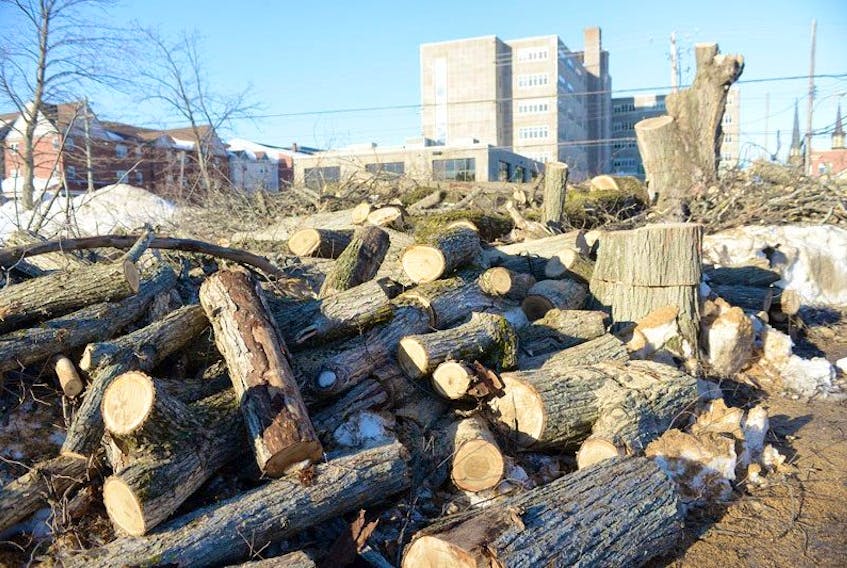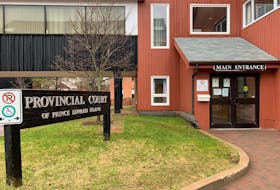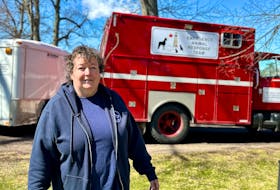All of that diseased elm wood being cut down in Charlottetown isn't going to waste.
The City of Charlottetown has partnered with local wood millers and artisan woodworkers on alternative uses for the Dutch elm diseased American elm wood in the city.
So far, Royalty Hardwoods and woodworkers Gary Torlone, Andy Collier and Gary Loo have signed agreements with the city and will be provided with some of the cut wood. Talks with other potential clients are ongoing as well.
To minimize the spread of the disease, the wood millers and woodworkers have signed a memorandum of understanding with the city that includes requirements designed to minimize the spread of Dutch elm disease.
RELATED: CHARLOTTETOWN TO CUT DOWN MORE THAN 300 DISEASED ELM TREES
RELATED: CHARLOTTETOWN TO HAVE DISEASED TREES CUT DOWN
People in the city have been stopping and watching the trees being taken down, some taking pictures or video.
Mayor Clifford Lee said the city has been trying to find alternative uses for the wood besides burying it.
"The cleanup of the cut wood has been difficult and slower than we anticipated due to the number of storms we experienced and the volume of snow that fell in the past few months,'' Lee said. "It is also very sad to watch these historic elms being removed.''
The silver lining in all of this is it will help manage the incurable disease. The woodworking projects will put some of the wood to good use and augment cleanup efforts.
The wood will be used for flooring, trim, cabinets and other artisan products such as dishes and carvings. "We hope to have more announcements like this in the coming weeks on ways the diseased wood will be used,'' said Coun. Kevin Ramsay, chairman of the city's advanced planning, priorities and special projects committee.
Royalty Hardwoods plans to donate a portion of the flooring sales from the reclaimed elm wood to Habitat for Humanity.
Martinus Rose, owner of Royalty Hardwoods, said they're always looking salvage trees or reclaimed lumber from old buildings and transform it into high end products.
The public is being asked not to take any of the wood that has been cut down. While the elm bark beetle is dormant now, it won't be for much longer. Any of the diseased wood that is stored will cause the disease to spread.
More than half of the 323 diseased trees have been removed to date with the remaining expected to be removed by the end of the month.
"When we heard the city was removing some diseased elms, we contacted them to see if we could secure some of the logs to process the trees into a variety of wood products at our manufacturing facility,'' Rose said. "We will be making a range of items, including live edge mantles, trim, stairs, furniture components and flooring.''
Rose said those products will be sold to the public, ensuring that the elm trees will live on, in another form, for years to come.
All of that diseased elm wood being cut down in Charlottetown isn't going to waste.
The City of Charlottetown has partnered with local wood millers and artisan woodworkers on alternative uses for the Dutch elm diseased American elm wood in the city.
So far, Royalty Hardwoods and woodworkers Gary Torlone, Andy Collier and Gary Loo have signed agreements with the city and will be provided with some of the cut wood. Talks with other potential clients are ongoing as well.
To minimize the spread of the disease, the wood millers and woodworkers have signed a memorandum of understanding with the city that includes requirements designed to minimize the spread of Dutch elm disease.
RELATED: CHARLOTTETOWN TO CUT DOWN MORE THAN 300 DISEASED ELM TREES
RELATED: CHARLOTTETOWN TO HAVE DISEASED TREES CUT DOWN
People in the city have been stopping and watching the trees being taken down, some taking pictures or video.
Mayor Clifford Lee said the city has been trying to find alternative uses for the wood besides burying it.
"The cleanup of the cut wood has been difficult and slower than we anticipated due to the number of storms we experienced and the volume of snow that fell in the past few months,'' Lee said. "It is also very sad to watch these historic elms being removed.''
The silver lining in all of this is it will help manage the incurable disease. The woodworking projects will put some of the wood to good use and augment cleanup efforts.
The wood will be used for flooring, trim, cabinets and other artisan products such as dishes and carvings. "We hope to have more announcements like this in the coming weeks on ways the diseased wood will be used,'' said Coun. Kevin Ramsay, chairman of the city's advanced planning, priorities and special projects committee.
Royalty Hardwoods plans to donate a portion of the flooring sales from the reclaimed elm wood to Habitat for Humanity.
Martinus Rose, owner of Royalty Hardwoods, said they're always looking salvage trees or reclaimed lumber from old buildings and transform it into high end products.
The public is being asked not to take any of the wood that has been cut down. While the elm bark beetle is dormant now, it won't be for much longer. Any of the diseased wood that is stored will cause the disease to spread.
More than half of the 323 diseased trees have been removed to date with the remaining expected to be removed by the end of the month.
"When we heard the city was removing some diseased elms, we contacted them to see if we could secure some of the logs to process the trees into a variety of wood products at our manufacturing facility,'' Rose said. "We will be making a range of items, including live edge mantles, trim, stairs, furniture components and flooring.''
Rose said those products will be sold to the public, ensuring that the elm trees will live on, in another form, for years to come.









